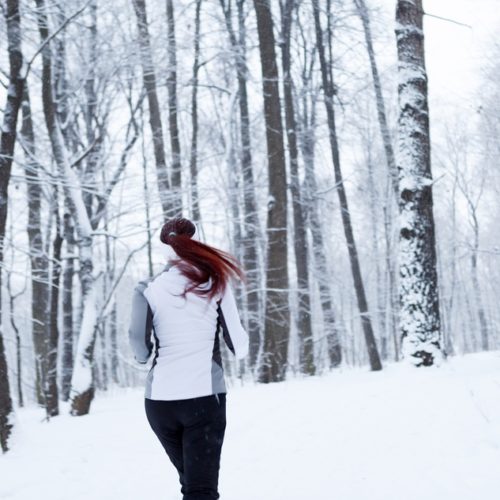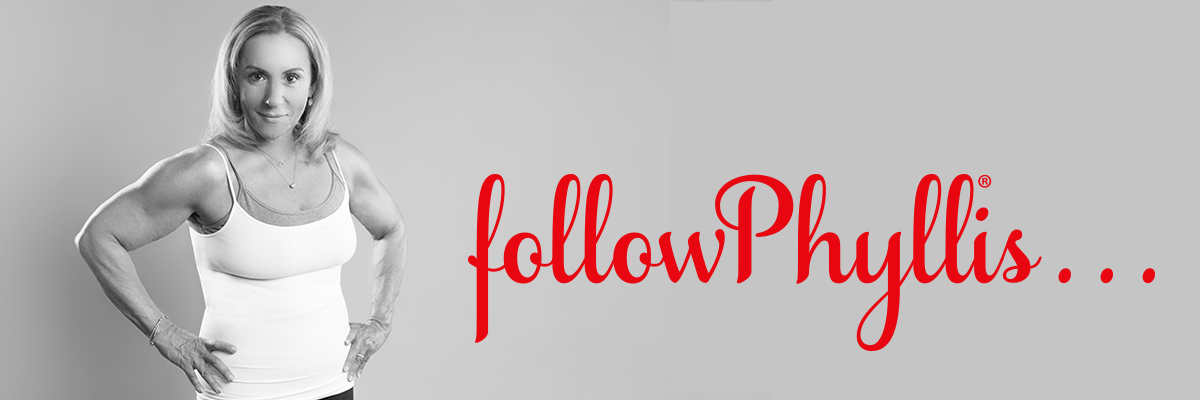 The natural inclination is to stay holed up inside at this time of year but exercising in the cold can be invigorating! If you’re a woman over fifty who has never exercised I don’t recommend starting outside but for those with a current fitness program it can be energizing. Exercising in the cold can burn more calories and also helps to increase your fitness level. But it’s important to be wise because winter weather could be dangerous if the proper precautions are not taken.
The natural inclination is to stay holed up inside at this time of year but exercising in the cold can be invigorating! If you’re a woman over fifty who has never exercised I don’t recommend starting outside but for those with a current fitness program it can be energizing. Exercising in the cold can burn more calories and also helps to increase your fitness level. But it’s important to be wise because winter weather could be dangerous if the proper precautions are not taken.
follow along with me...
- LAYER UP. Layering your clothes will give you maximum benefits when it’s cold outside. The first layer helps regulate your body temperature and keeps you dry from perspiration. The best fabrics for this layer include polyesters, silk, and wool. The second layer should help you retain heat. Natural fibers and fleece are good choices. The third layer should protect you from weather conditions like rain and snow. Water repellent jackets are perfect for this.
- COVER YOUR FEET, HANDS, HEAD AND NOSE. These body parts are different from other areas of your body because most body heat goes to your core and not these areas which make them susceptible to frostbite. A hat or hood on your head is mandatory. A lined neoprene mask gives your nose proper protection. Your hands must have gloves and your feet should be covered with wool socks and waterproof/insulated footwear.
- TAKE IT SLOW. In the winter, it becomes darker earlier, everything is slippery, and things may be covered with snow. If you decide to go for a run or walk outside, make sure to wear reflective clothing so people, especially drivers, know you are there. To make sure you don’t slip on ice, wear shoes that have great traction like those with rubber soles. Whatever you do, TAKE IT SLOW! I’ve heard so many horror stories of people ignoring the environment which invariably ends in injury.
- PROTECT YOUR SKIN. Dry skin tends to be common in the winter because the moisture in our skin evaporates faster when the air is cold and dry. This results in flaky, dull looking skin. Moisturizing with oil-based ointments can help relieve these side-effects. Also, DO NOT forget to put on sunscreen. Even though the sun might not seem as strong in the winter as it does in the summer it is. The sun combined with the glare against the snow can cause a lot of damage. Apply moisturizer and sunscreen about a half hour before going outside.
- CHECK WEATHER CONDITIONS BEFORE-HAND. This is key when planning a safe workout in the cold. The main things to check for are wind strength, temperature, and moisture level. Who wants to put their body at risk for hypothermia? Getting wet and/or experiencing extreme wind chill can be very dangerous to your body.
- KNOW THE WARNING SIGNS. If you start to feel numbness, tingling, or notice discoloration of your skin immediately head back inside to warm up. If your symptoms are more drastic like uncontrollable shivering, mumbling, weak pulse, or drowsiness seek medical care immediately. Don’t take any chances!
- STAY HYDRATED. Even if you aren’t perspiring, this does not mean you aren’t losing water from your body. Make sure to bring water with you and drink! Also, staying well hydrated can prevent your skin from becoming dry and cracked. One of the biggest signs of dehydration is chapped lips. If you experience this your body is telling you to drink that water!
Fresh air is great for the body! Going outside is always a good thing to do. Didn’t you constantly tell your kids to “go outside” Maybe now is the time for you to take your own advice. Remember when you were young and loved to get bundled up and play in the snow? Don’t let middle-age stop you! Just make sure the conditions are good and you are properly prepared.
It is important for you to discuss an outside exercise plan with your doctor. There are certain medical conditions that could prevent you from vigorous outdoor workouts.
HOW DOES WINTER AFFECT YOUR EXERCISE ROUTINE?
If you prefer working indoors this is the post for you!
10 BRILLIANT WAYS TO FEEL COMFORTABLE IN THE GYM WHEN YOU’RE OVER 50

